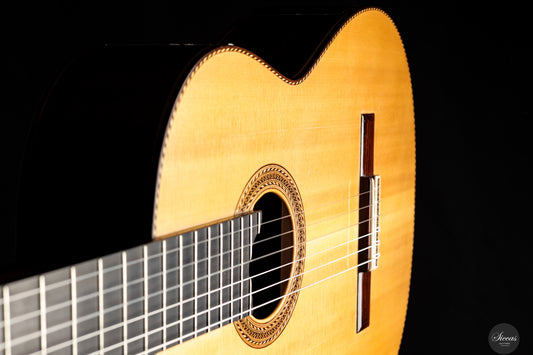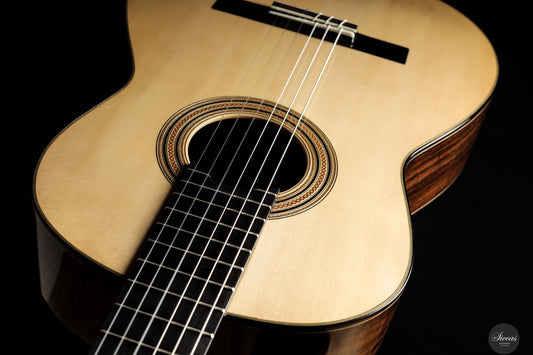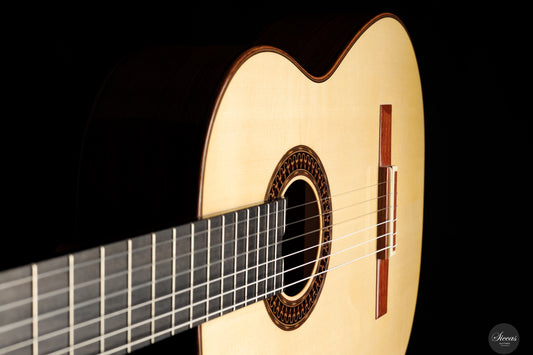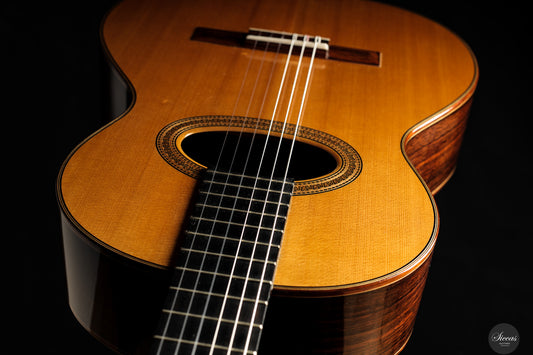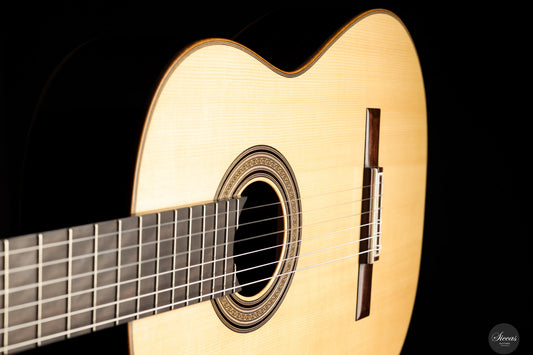Für Elise by Ludwig van Beethoven: The Iconic Piano Composition Translated for Guitar
1. Introduction: The Timeless Appeal of “Für Elise”
Ludwig van Beethoven’s “Für Elise” is one of the most recognizable pieces of classical music ever composed. Known for its delicate and memorable melody, the piece was originally written for piano in 1810. Over the years, it has been transcribed for numerous instruments—including the classical guitar. The guitar adaptation of “Für Elise” brings a unique charm to the piece, highlighting its subtle nuances while preserving its emotional essence.
This article explores the history of “Für Elise,” its interpretation on the guitar, and key techniques for mastering this iconic work. Whether you’re a seasoned player or beginning your classical guitar journey, learning “Für Elise” is both a rewarding challenge and an opportunity to experience Beethoven’s genius from a new perspective.
2. A Brief History of “Für Elise”
Beethoven composed “Für Elise” (Bagatelle No. 25 in A minor) around 1810, though it remained unpublished until 1867—40 years after his death. The work was discovered by music scholar Ludwig Nohl among Beethoven’s unpublished manuscripts. The identity of the mysterious “Elise” remains uncertain. Some scholars believe she may have been Therese Malfatti, a student and possible romantic interest of Beethoven, while others suggest different muses.
The piece’s opening theme is instantly recognizable. It alternates between playful, lyrical passages and more dramatic sections, making it both accessible and expressive. Its adaptability has contributed to its lasting popularity and frequent arrangements for guitar.
3. Why “Für Elise” Works So Well on the Guitar
The classical guitar is ideally suited for conveying the subtle expressiveness of “Für Elise.” The nylon strings provide a warm, mellow sound that enhances the delicate melody. Fingerstyle technique enables players to emphasize the lyrical and dynamic aspects of the piece with great nuance.
Unlike piano, where notes are struck, guitar playing involves plucking and subtle finger movements that influence articulation and expression. This allows guitarists to interpret “Für Elise” in a uniquely personal way, enhancing its emotional impact.
4. Techniques for Playing “Für Elise” on Classical Guitar
Adapting “Für Elise” for guitar involves some key adjustments. Here are essential techniques to keep in mind:
- Fingerstyle Playing: Use classical right-hand fingerpicking (thumb, index, middle, and ring fingers) to capture the fluidity of the melody.
- Position Shifts: Smoothly shift between positions on the fretboard to maintain melodic continuity.
- Dynamics and Expression: Employ rest strokes (apoyando) for emphasis and free strokes (tirando) for gentler passages. Vary your dynamics to bring the piece to life.
- Left-Hand Techniques: Use hammer-ons, pull-offs, and slides to emulate the legato phrasing of the original piano composition.
5. Sheet Music, Tabs, and Arrangements
If you’re ready to learn “Für Elise,” you’ll find a variety of tabs and transcriptions online. Choosing the right arrangement depends on your skill level.
- Beginner Arrangements: Simplified versions focus on the main theme and avoid more challenging passages—ideal for early learners.
- Intermediate to Advanced Arrangements: These transcriptions preserve the full structure and complexity of the piece, requiring solid fingerstyle and fretboard navigation.
High-quality editions are available from sources like Siccas Guitars, offering accurate and expressive arrangements for classical guitarists.
6. How to Approach Learning “Für Elise” on Guitar
Approaching “Für Elise” with a plan will make your learning process smoother and more enjoyable. Consider the following tips:
- Break It Down: Begin with the main theme, then gradually learn the more complex sections.
- Slow Practice: Practice slowly and precisely to build accuracy and confidence.
- Use a Metronome: Keep your timing consistent with a metronome, especially in flowing sections.
- Focus on Expression: Once the notes are learned, shape the phrasing and dynamics to reflect your interpretation.
7. Common Challenges and Tips for Mastery
Although it seems simple at first, “Für Elise” presents several challenges:
- Finger Independence: Playing melody and bass simultaneously can be difficult—practice hands separately if needed.
- Smooth Position Changes: Master fretboard shifts to avoid disrupting the melodic flow.
- Maintaining Dynamics: Develop finger sensitivity to express subtle dynamic changes throughout the piece.
Recording yourself is a useful way to identify areas for improvement in phrasing, timing, and tone.
8. Conclusion: Celebrating Beethoven’s Legacy on Guitar
Learning “Für Elise” on classical guitar is a fulfilling experience that connects guitarists with one of Beethoven’s most beloved works. The guitar adaptation reveals new textures and offers a fresh perspective on this timeless piece.
Whether drawn to its iconic melody or emotional resonance, mastering “Für Elise” will not only enhance your technique but also deepen your appreciation for classical music. Embrace the challenge and enjoy expressing Beethoven’s legacy through your instrument.



